Curly Hair Tarantula
- March 13, 2024
- 0 comment
The Curly Hair Tarantula, scientifically known as Brachypelma albopilosum, is a captivating species of tarantula renowned for its distinctive appearance and gentle demeanor. Native to the tropical forests of Central America, including countries like Costa Rica, Honduras, Nicaragua, and Guatemala, these arachnids have become popular among enthusiasts and pet owners alike. They are characterized by their compact body structure, typically reaching sizes of 5 to 6 inches in leg span, and are adorned with dense, curly hairs that give them a velvety texture.

Despite their formidable appearance, Curly Hair Tarantulas are known for their docile temperament, making them suitable pets for those interested in exotic arachnids. In their natural habitat, they can be found dwelling in burrows or crevices within the forest floor, where they construct silk-lined retreats for shelter and security. Their diet consists mainly of insects and small invertebrates, and they employ urticating hairs as a defense mechanism when threatened. Providing a suitable enclosure with proper humidity levels and temperature gradients is essential for their well-being in captivity. With proper care, Curly Hair Tarantulas can live for over a decade, offering their owners a unique and fascinating glimpse into the world of arachnids.
| Specification | Description |
|---|---|
| Scientific Name | Brachypelma albopilosum |
| Common Name | Curly Hair Tarantula |
| Size | 5 to 6 inches in leg span |
| Body Structure | Compact and robust, with a round abdomen and stocky legs |
| Coloration | Dark-colored body covered in dense, curly hairs |
| Native Habitat | Tropical forests of Central America, including Costa Rica, Honduras, Nicaragua, and Guatemala |
| Natural Behavior | Generally docile, but may exhibit defensive behaviors when threatened |
| Diet | Mainly insects and small invertebrates; opportunistic feeders |
| Defense Mechanism | Flicking urticating hairs from the abdomen to deter predators |
| Captivity Requirements | Suitable enclosure with ample substrate, climbing structures, proper humidity, and temperature levels |
| Lifespan | Over 10 years in captivity, with some individuals reaching ages of 15 years or more |
A Guide to Care and Appreciation

The Curly Hair Tarantula, scientifically known as Brachypelma albopilosum, is a captivating species of tarantula admired for its unique appearance and manageable temperament. Originating from Central America, these arachnids have gained popularity among exotic pet enthusiasts due to their striking features and relatively docile nature.
Physical Characteristics of the Curly Hair Tarantula
Body Structure
The Curly Hair Tarantula possesses a robust and compact body structure. It typically has a round abdomen and stocky legs, giving it a sturdy appearance. This body design aids in their ability to burrow and navigate through their natural habitat.


Coloration
These tarantulas exhibit a dark-colored body, often ranging from shades of brown to black. Their body is covered in dense, curly hairs, which contribute to their overall appearance. The hairs may vary in coloration within the brown and black spectrum, adding depth to their coloration.
Hair
As their name suggests, the Curly Hair Tarantula is adorned with dense, curly hairs covering its body. These hairs serve multiple purposes, including sensory perception, trapping prey, and defense against predators. The curly hairs give the tarantula a velvety texture and contribute to its distinctive appearance.

Habitat and Distribution


The Curly Hair Tarantula is native to the tropical forests of Central America, primarily found in countries such as Costa Rica, Honduras, Nicaragua, and Guatemala. Within these regions, they inhabit a variety of forested environments, including rainforests, dry forests, and cloud forests.
In their natural habitat, Curly Hair Tarantulas are typically found dwelling in burrows or crevices within the forest floor. They construct silk-lined retreats for shelter and security, utilizing their surroundings to create suitable habitats. These tarantulas are well-adapted to their environment, where they can thrive in the warm and humid conditions prevalent in Central American forests.
The distribution of Curly Hair Tarantulas within their range can vary based on factors such as habitat availability, prey abundance, and environmental conditions. While they are widespread within their native range, specific populations may be more concentrated in certain areas where suitable habitats are abundant.
Behavior and Temperament
Feeding Habits
In the wild, Curly Hair Tarantulas are opportunistic feeders, preying on a variety of insects and small invertebrates. They actively hunt for prey, using their keen sense of touch and sight to locate potential food sources. Once prey is detected, the tarantula will seize it with its fangs and inject venom to immobilize and digest the prey.

In captivity, Curly Hair Tarantulas readily accept a diet consisting of live prey, such as crickets, mealworms, and cockroaches. It’s essential to provide appropriately sized prey items to match the tarantula’s size and appetite. Overfeeding should be avoided, as it can lead to obesity and other health issues.
Defense Mechanisms
While generally docile, Curly Hair Tarantulas possess several defense mechanisms to protect themselves from potential threats:


- Urticating Hairs: When threatened, Curly Hair Tarantulas may kick or flick specialized hairs from their abdomen known as urticating hairs. These barbed hairs can cause irritation and discomfort to predators or perceived threats, deterring them from attacking further.
- Biting: As a last resort, Curly Hair Tarantulas may resort to biting if they feel extremely threatened or cornered. However, they are not aggressive by nature and will typically only bite in self-defense.
- Posturing: In addition to physical defenses, Curly Hair Tarantulas may adopt defensive postures to intimidate potential threats. This can include rearing up on their hind legs or displaying their fangs as a warning signal.
Keeping Curly Hair Tarantulas as Pets
Enclosure Setup
Creating an appropriate enclosure is essential for the health and well-being of Curly Hair Tarantulas. Here are some key factors to consider:


- Terrarium Size: Select a terrarium that provides ample space for the tarantula to move around comfortably. A 10-gallon tank is suitable for most adult Curly Hair Tarantulas, while juveniles can be housed in smaller enclosures.
- Substrate: Use a substrate that allows for burrowing, such as coconut fiber or peat moss. Provide a layer of substrate that is at least twice the tarantula’s leg span to accommodate burrowing behavior.
- Hiding Places: Include hiding spots such as cork bark or half logs to provide security for the tarantula. Additionally, add climbing structures such as branches or artificial plants for enrichment.
- Temperature and Humidity: Maintain a temperature range of 75-85°F (24-29°C) and humidity levels of 70-80%. Use a combination of heating pads and misting to achieve these conditions.
- Ventilation: Ensure adequate ventilation to prevent the buildup of moisture and mold. Screen lids or ventilation holes can help promote air circulation within the enclosure.
Diet and Feeding
Curly Hair Tarantulas are carnivorous and primarily feed on insects and small invertebrates. Here’s how to properly feed them:


- Prey Selection: Offer a varied diet consisting of live prey such as crickets, mealworms, roaches, and waxworms. Gut-load insects with nutritious foods before feeding them to the tarantula.
- Feeding Frequency: Juvenile tarantulas can be fed every 2-3 days, while adults may only require feeding once or twice a week. Adjust feeding frequency based on the tarantula’s appetite and activity level.
- Monitoring: Monitor the tarantula’s feeding response and remove any uneaten prey items to prevent spoilage and maintain a clean enclosure.
Handling and Care

Handling Curly Hair Tarantulas should be done with caution to avoid stress or injury to the spider. Here are some tips for handling and care:
- Approach Calmly: Approach the tarantula calmly and gently, avoiding sudden movements that may startle it.
- Use a Soft Brush: If necessary, gently coax the tarantula onto your hand using a soft brush or paintbrush. Avoid grabbing or pinching the tarantula, as this can cause it to become defensive.
- Avoid Stress: Limit handling to short periods and avoid excessive handling, as it can stress the tarantula. Handle the tarantula close to the ground or over a soft surface in case it falls.
- Regular Maintenance: Perform regular maintenance tasks such as substrate replacement, cleaning, and monitoring of temperature and humidity levels to ensure the tarantula’s well-being.
Common Health Issues
While Curly Hair Tarantulas are generally hardy creatures, they can still be susceptible to certain health problems. It’s essential for tarantula owners to be aware of these issues and take appropriate measures to prevent and address them. Some common health issues include:
- Dehydration: Tarantulas can become dehydrated if they do not have access to a clean water source. Signs of dehydration include lethargy, sunken abdomen, and wrinkled skin. Providing a shallow water dish with fresh water and misting the enclosure regularly can help maintain proper hydration levels.
- Mites: External parasites known as mites can infest tarantula enclosures, causing irritation and stress to the spider. Signs of mite infestation include tiny moving specks on the tarantula’s body or substrate. Regularly cleaning and disinfecting the enclosure, as well as quarantining new additions, can help prevent mite outbreaks.
- Fungal Infections: Fungal infections can occur in tarantulas due to high humidity levels or poor ventilation in the enclosure. Symptoms may include white or discolored patches on the tarantula’s body, lethargy, and loss of appetite. Maintaining proper humidity levels and ensuring adequate ventilation can help prevent fungal infections.
- Injuries: Tarantulas can sustain injuries from falls, rough handling, or fighting with cage mates. Common injuries include broken limbs, puncture wounds, and abrasions. Handling tarantulas gently and providing a safe environment with soft substrate and secure climbing structures can help prevent injuries.
- Molting Problems: Molting is a natural process in which tarantulas shed their old exoskeleton to grow larger. However, molting can sometimes be challenging or incomplete, leading to complications such as stuck exuviae or difficulty in shedding. Providing a humid environment and refraining from handling during the molting process can help minimize molting problems.
- Parasites: Internal parasites such as nematodes or protozoa can infect tarantulas, causing digestive issues and overall weakness. Symptoms may include regurgitation, diarrhea, and weight loss. Keeping the enclosure clean and avoiding feeding wild-caught prey can help reduce the risk of parasite transmission.
Breeding and Reproduction
Breeding Curly Hair Tarantulas can be a rewarding but challenging endeavor for tarantula enthusiasts. Here are some key aspects of the breeding and reproduction process:
Sexual Dimorphism
Curly Hair Tarantulas exhibit sexual dimorphism, meaning males and females have distinct physical characteristics. Mature males are typically smaller and have longer, thinner legs, while mature females are larger and have shorter, thicker legs.
Mating Rituals
During the mating season, male Curly Hair Tarantulas will actively search for receptive females. Mating rituals often involve the male performing a courtship display to attract the female’s attention. This may include drumming on the substrate or gently tapping the female’s legs with his pedipalps.
Copulation
Once the female has accepted the male’s advances, copulation occurs. The male carefully inserts his pedipalps, which are modified into reproductive organs, into the female’s genital opening to transfer sperm. Mating can last for several hours, with the male carefully maneuvering to avoid becoming prey to the larger female.
Egg-Laying
After successful copulation, the female Curly Hair Tarantula will begin to develop eggs within her abdomen. She will construct a silk egg sac, where she deposits the fertilized eggs and guards them vigilantly. The number of eggs laid can vary depending on factors such as the female’s age, size, and health.
Incubation Period
The female will carefully tend to the egg sac, protecting it from predators and maintaining optimal conditions for development. The eggs typically take several weeks to hatch, with the exact duration depending on factors such as temperature and humidity.
Spiderlings
Once the eggs hatch, the female will assist the spiderlings in emerging from the egg sac. Spiderlings are miniature versions of adult tarantulas and will undergo several molts as they grow and develop. It’s essential to provide suitable housing and feeding options for the spiderlings to ensure their survival.
Conservation Status
The Curly Hair Tarantula, also known scientifically as Brachypelma albopilosum, is currently classified as a species of least concern (LC) by the International Union for Conservation of Nature (IUCN). However, it’s important to note that the conservation status of tarantulas, including the Curly Hair Tarantula, can vary depending on their specific geographic location and habitat.
While the overall population of Curly Hair Tarantulas appears stable, they face certain threats and challenges in their natural habitat. These threats include:
- Habitat Destruction: Deforestation and habitat fragmentation pose significant risks to the survival of Curly Hair Tarantulas. As tropical forests are cleared for agriculture, logging, and urban development, the tarantulas lose essential habitat and resources.
- Collection for the Pet Trade: Curly Hair Tarantulas are popular in the exotic pet trade due to their unique appearance and manageable temperament. However, indiscriminate collection from the wild can deplete local populations and disrupt ecosystems.
- Climate Change: Climate change can impact the availability of suitable habitat for Curly Hair Tarantulas, as shifts in temperature and precipitation patterns may alter forest ecosystems. This can affect their ability to find food, reproduce, and thrive in their natural environment.
Conservation efforts aimed at protecting the habitats of Curly Hair Tarantulas and other tarantula species are essential for their long-term survival. These efforts may include:
- Establishing protected areas and reserves to preserve critical habitat for tarantulas.
- Implementing sustainable harvesting practices for wild-caught specimens in the pet trade.
- Conducting research on tarantula ecology, behavior, and population dynamics to inform conservation strategies.
- Educating local communities and stakeholders about the importance of conserving tarantula species and their habitats.
Different Species
Brachypelma smithi
Also known as the Mexican Red Knee Tarantula, this species is closely related to the Curly Hair Tarantula. It features a dark body with distinctive red-orange markings on its knees and abdomen.


Brachypelma boehmei
Commonly known as the Mexican Fire Leg Tarantula, this species displays vibrant red-orange hairs on its legs, contrasting with its dark body coloration. It is native to Mexico.
Brachypelma hamorii
Formerly considered the same species as Brachypelma smithi, this tarantula is now recognized as a distinct species. It shares similar physical characteristics with the Mexican Red Knee Tarantula, including its dark body and red-orange knee markings.


Brachypelma verdezi
Also known as the Mexican Rose Grey Tarantula, this species features a darker body coloration compared to other “curly hair” tarantulas. It has a dense covering of curly hairs, giving it a velvety appearance.
Brachypelma auratum
Native to Mexico, this species is often referred to as the Mexican Flame Knee Tarantula. It exhibits bright orange or red markings on its knees and abdomen, similar to other members of the Brachypelma genus.

Frequently Asked Questions (FAQs)
- Are Curly Hair Tarantulas dangerous to handle?
While they possess venom, Curly Hair Tarantulas are generally docile and rarely bite unless provoked. However, handling should be done with caution to avoid stress or injury to the spider. - What do Curly Hair Tarantulas eat?
In the wild, they primarily feed on insects and small invertebrates. In captivity, they can be fed a diet consisting of crickets, mealworms, and occasional small rodents. - How big do Curly Hair Tarantulas get?
Curly Hair Tarantulas typically reach sizes of 5 to 6 inches in leg span when fully grown, making them a medium-sized tarantula species. - Do Curly Hair Tarantulas require special care?
While they are relatively easy to care for, Curly Hair Tarantulas do have specific habitat requirements, including proper humidity levels, substrate for burrowing, and a suitable enclosure setup. - Can Curly Hair Tarantulas live together in the same enclosure?
It’s generally not recommended to house multiple Curly Hair Tarantulas together, as they are solitary creatures and may exhibit territorial behaviors, leading to aggression or cannibalism. - How often should I feed my Curly Hair Tarantula?
Juvenile tarantulas can be fed every few days, while adults may only require feeding once or twice a week, depending on their appetite and activity level. - Do Curly Hair Tarantulas require special lighting in their enclosure?
No, Curly Hair Tarantulas are nocturnal creatures and do not require UVB lighting. Ambient room lighting is sufficient, and excessive exposure to bright lights may stress them. - What is the lifespan of a Curly Hair Tarantula?
With proper care, Curly Hair Tarantulas can live for over 10 years in captivity, with some individuals reaching ages of 15 years or more. - How should I handle my Curly Hair Tarantula?
Handling should be done with caution and gentleness to avoid stressing or injuring the spider. It’s best to allow them to walk onto your hand voluntarily rather than forcing them to be handled. - Do Curly Hair Tarantulas require special substrates for their enclosure?
While they prefer a substrate that allows for burrowing, such as coconut fiber or peat moss, Curly Hair Tarantulas can adapt to various substrates as long as they provide adequate moisture and support for their burrows.




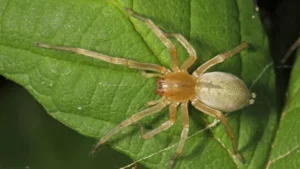
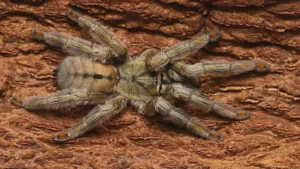
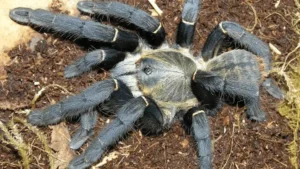
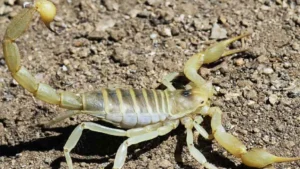
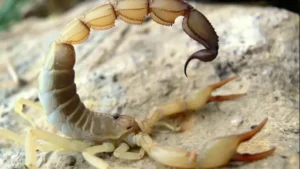
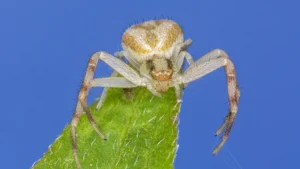
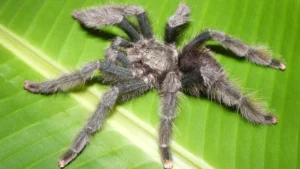
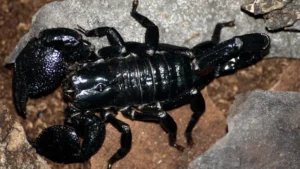


Leave your comment